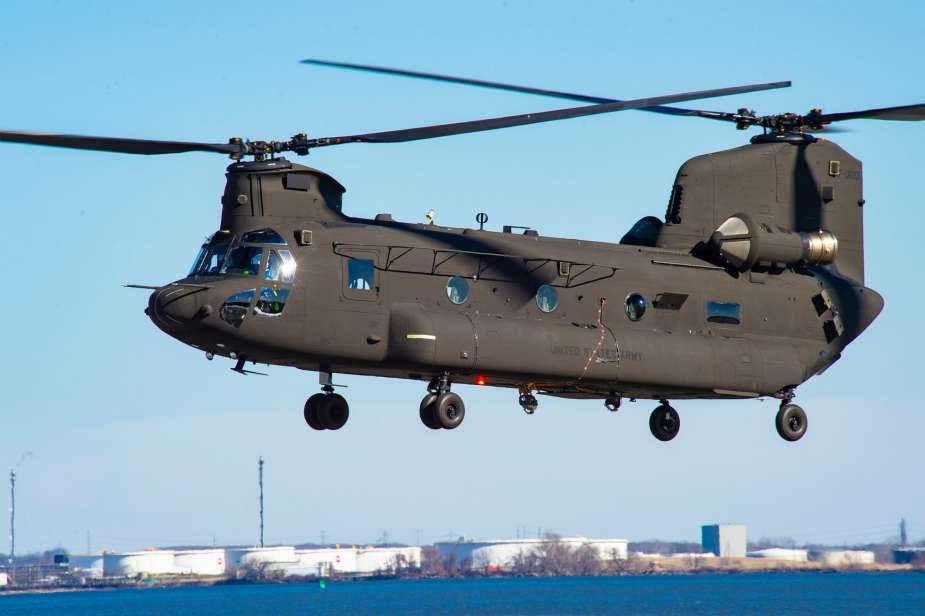Breaking news
Boeing announces deployment of CH-47F Block II Chinooks for US Army.
The United States Army has taken a significant step forward in enhancing its heavy-lift helicopter capabilities with the acquisition of additional CH-47F Block II Chinooks from Boeing. This move highlights the Army's commitment to modernizing its fleet with cutting-edge technologies and designs, ensuring operational readiness and optimizing future maintenance costs.
Follow Air Recognition on Google News at this link
 The CH-47F Block II represents an advancement in the Chinook helicopter line, focusing on increased payload capacity and improved performance. (Picture source: Boeing)
The CH-47F Block II represents an advancement in the Chinook helicopter line, focusing on increased payload capacity and improved performance. (Picture source: Boeing)
Despite the somewhat limited success of helicopters in modern conflicts and the cancellation of a new heavy-lift helicopter project, Boeing announced on February 14th that the CH-47F Block II is now ready for operation within the American armed forces. This development continues the Army's modernization efforts, with a $63 million contract awarded to Boeing for the second batch (Lot 2) of CH-47F Block II Chinooks, bringing the total number of these advanced helicopters under contract to six. This follows a previous $136 million contract for the first four CH-47F Block II aircraft. Furthermore, Boeing received a $29 million advanced preparation contract for Lot 3, further securing the program's future. These developments are part of a broader initiative to ensure the Chinook remains a cornerstone of the Army's heavy-lift mission for years to come, an initiative that may be reevaluated in light of recent developments.
The CH-47F Block II represents an advancement in the Chinook helicopter line, focusing on increased payload capacity and improved performance under challenging conditions. Designed from 2020, this model was aimed to transport a payload of 22,000 pounds (about 10,000 kg) in high altitude and high-temperature conditions, specifically at 4,000 feet (about 1,200 meters) and 95 °F (35 °C), with the goal of increasing this capability to 6,000 feet (about 1,800 meters). This enhanced capability allows the CH-47F Block II to transport Joint Light Tactical Vehicles, necessitating an increase in the maximum takeoff weight to 54,000 pounds (about 24,500 kg).
To achieve these ambitious goals, the CH-47F Block II is equipped with Honeywell T55-715 engines, which are 20% more powerful than their predecessors. It also incorporates an active parallel actuator system (APAS) that enhances the digital advanced flight control system, allowing for an exact torque split between the rotors for increased efficiency. In terms of fuel management, a system redesign consolidated the three fuel tanks in each sponson into a single tank, reducing weight by 90 kg (200 pounds) while increasing fuel capacity.
The increase in electrical capacity is also notable, with the addition of three 60 kVA generators, thus enhancing the helicopter's versatility and operational capability. However, a significant aspect of the CH-47F Block II development was the decision not to implement the Advanced Chinook Rotor Blades (ACRB), derived from the canceled RAH-66 Comanche program. These blades were intended to improve lift performance in hot and high-altitude conditions by 2,000 pounds. Nevertheless, due to persistent vibration during testing, the US Army decided not to proceed with this innovation, despite Boeing's assertion that the vibration did not pose a safety risk and could be resolved with dampeners.
Despite the presumed demise of helicopters, the US Army is still receiving CH-47F Block IIs, leaving open the question of how these equipments will be used in potential future conflicts.


























